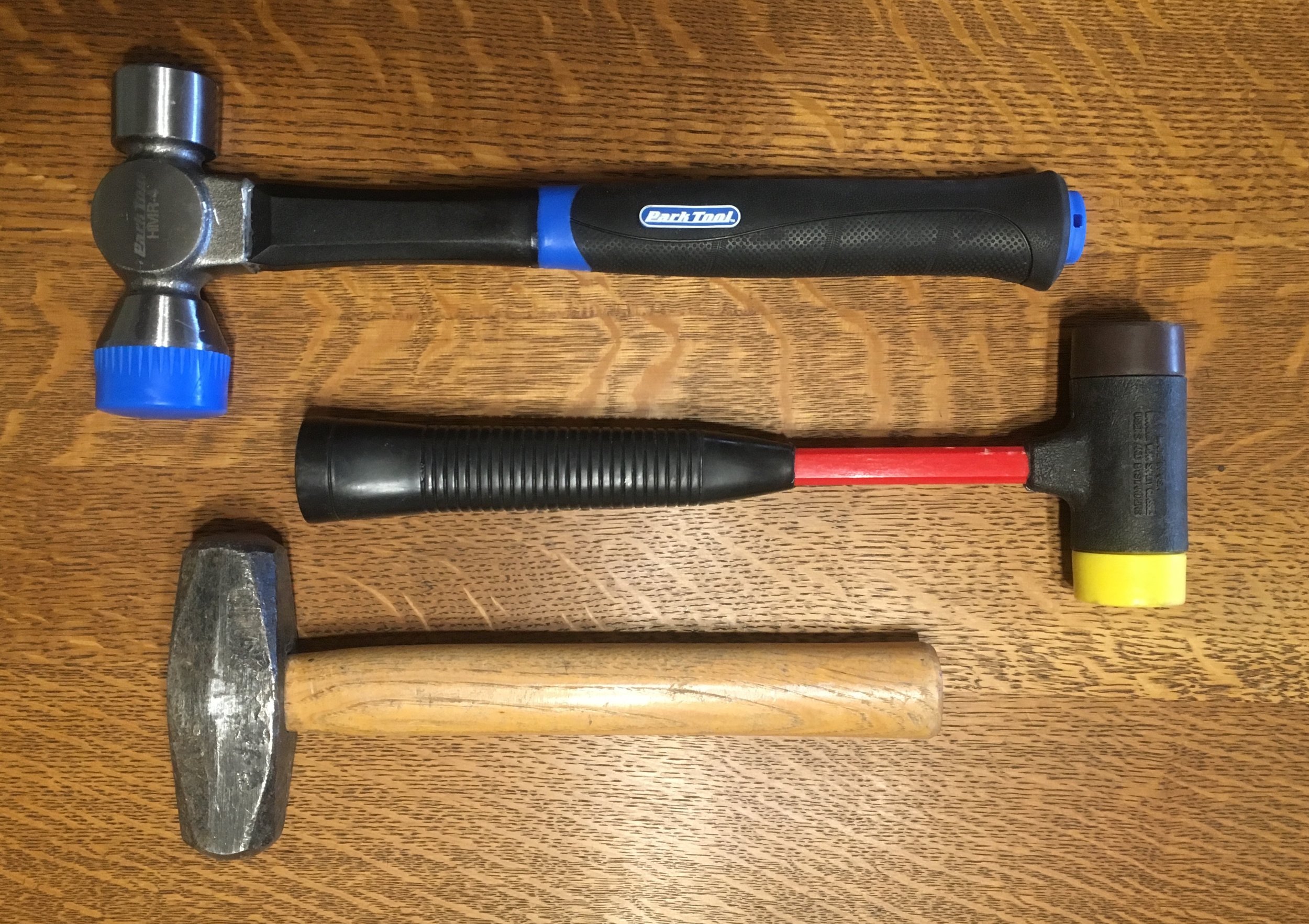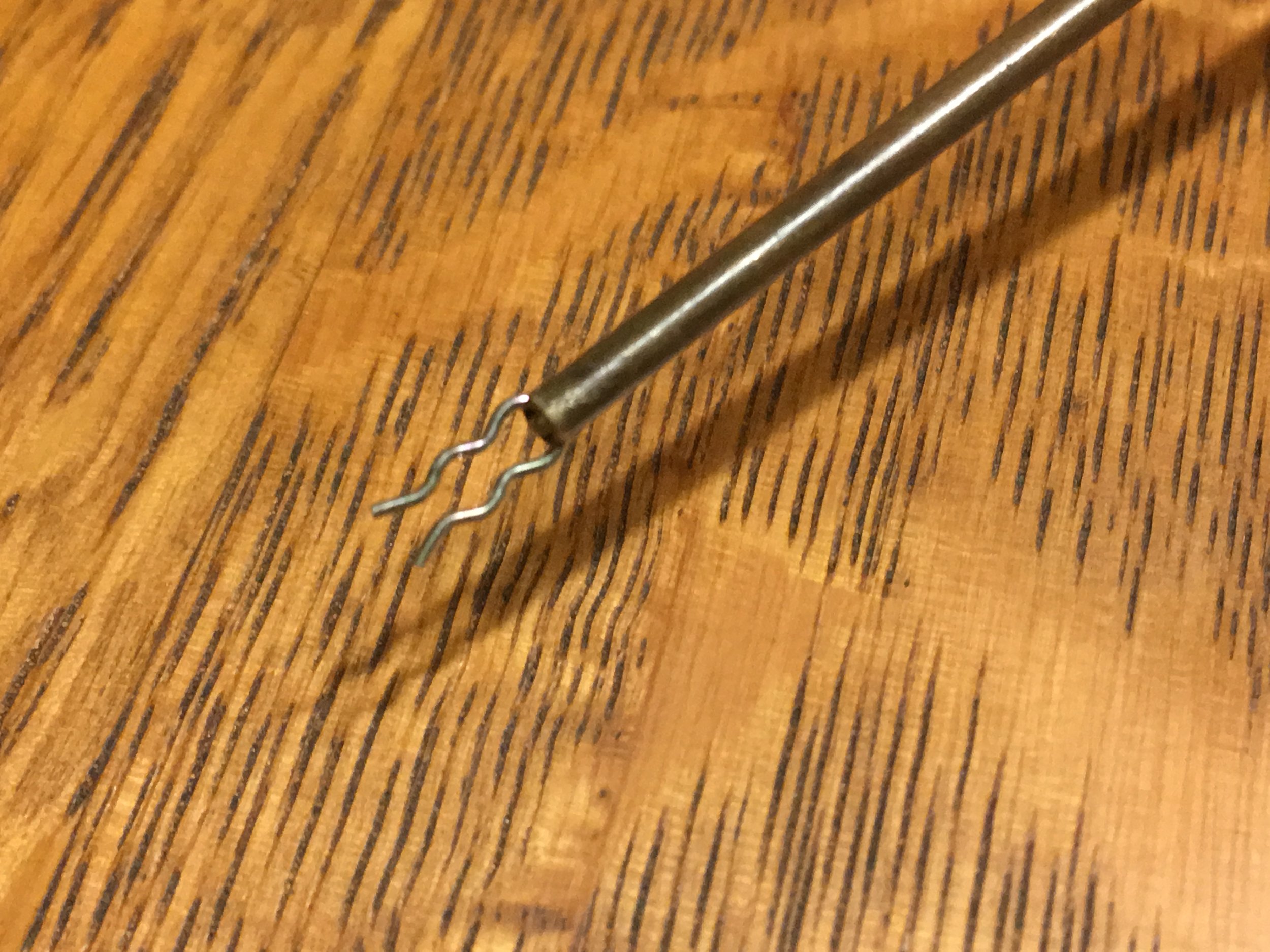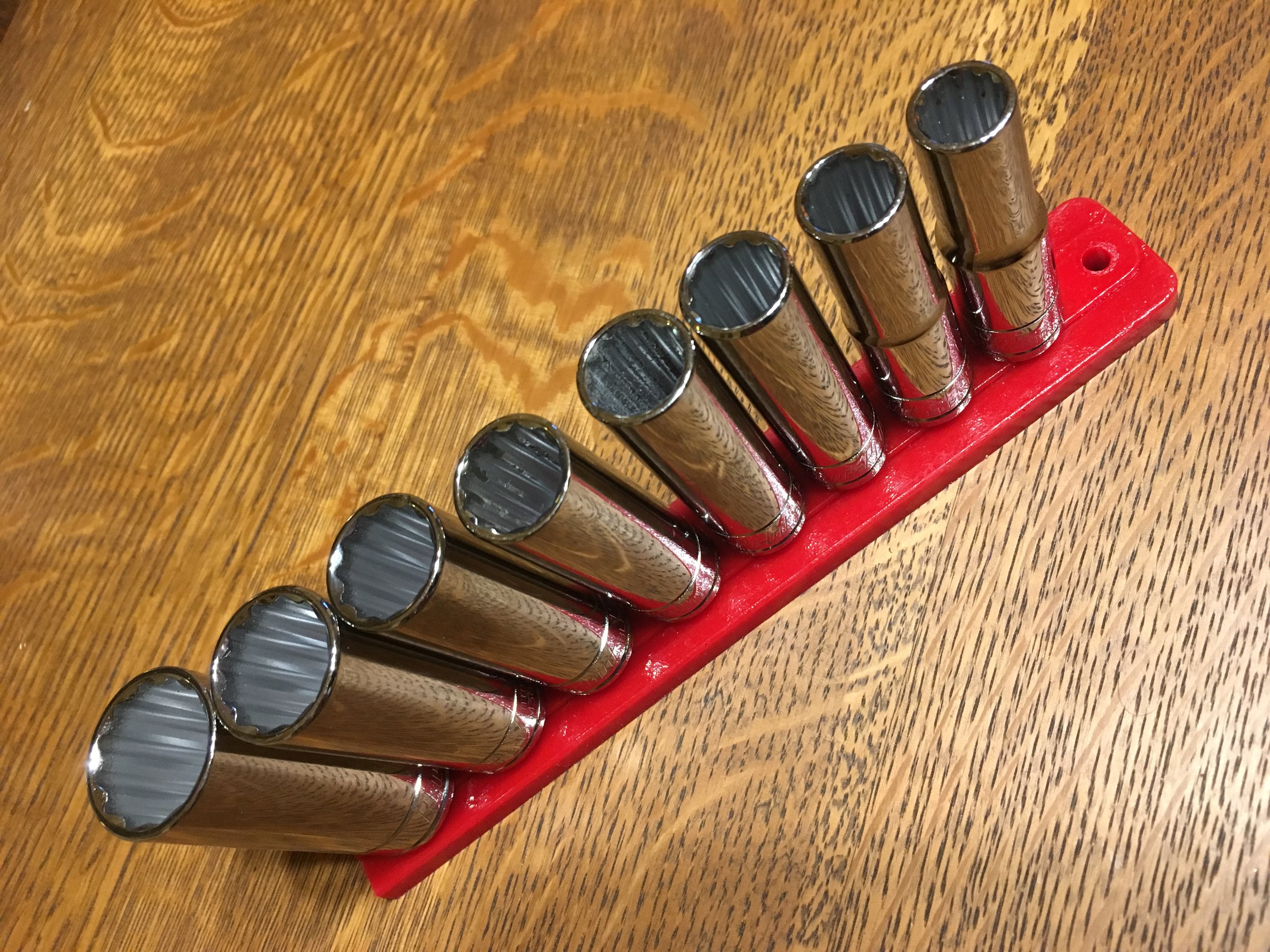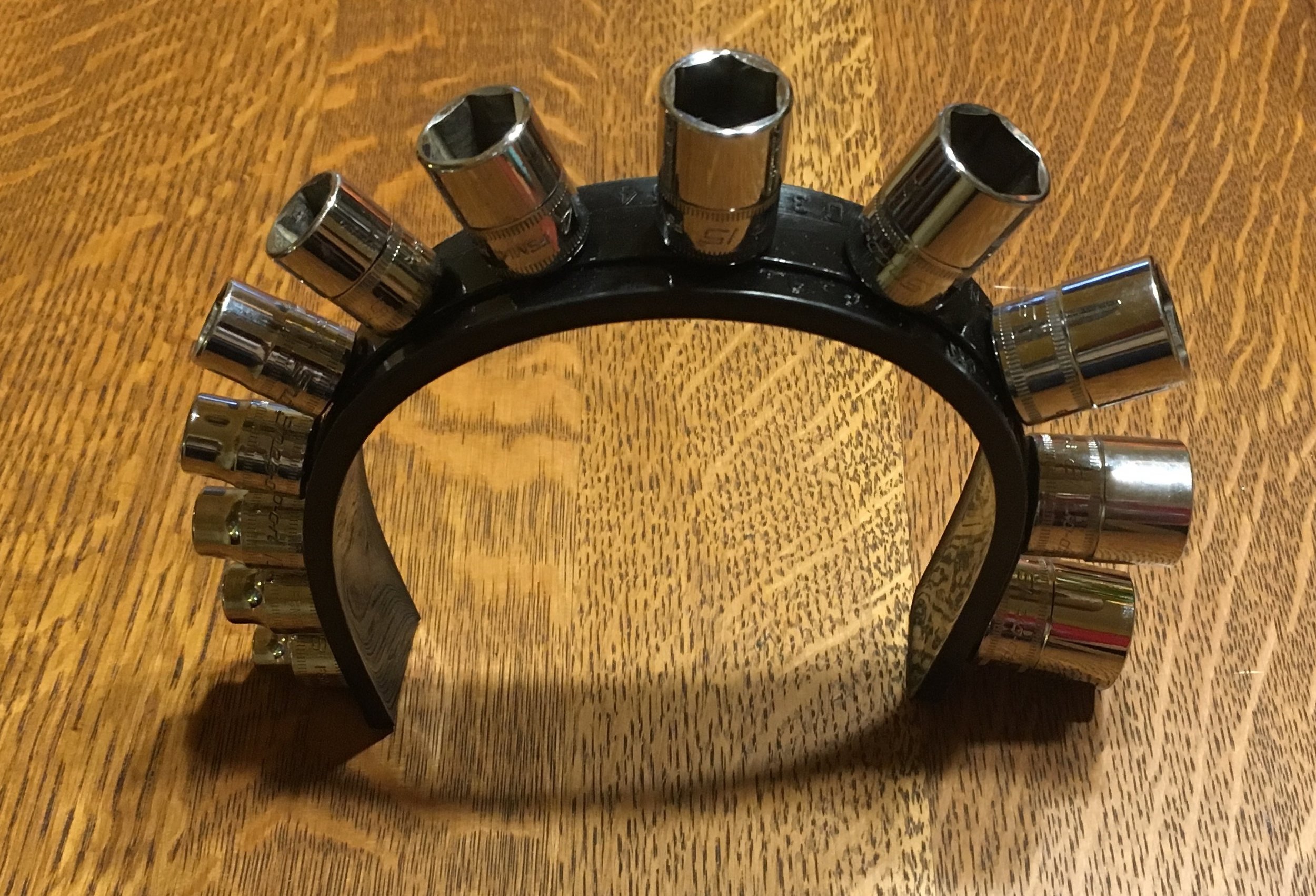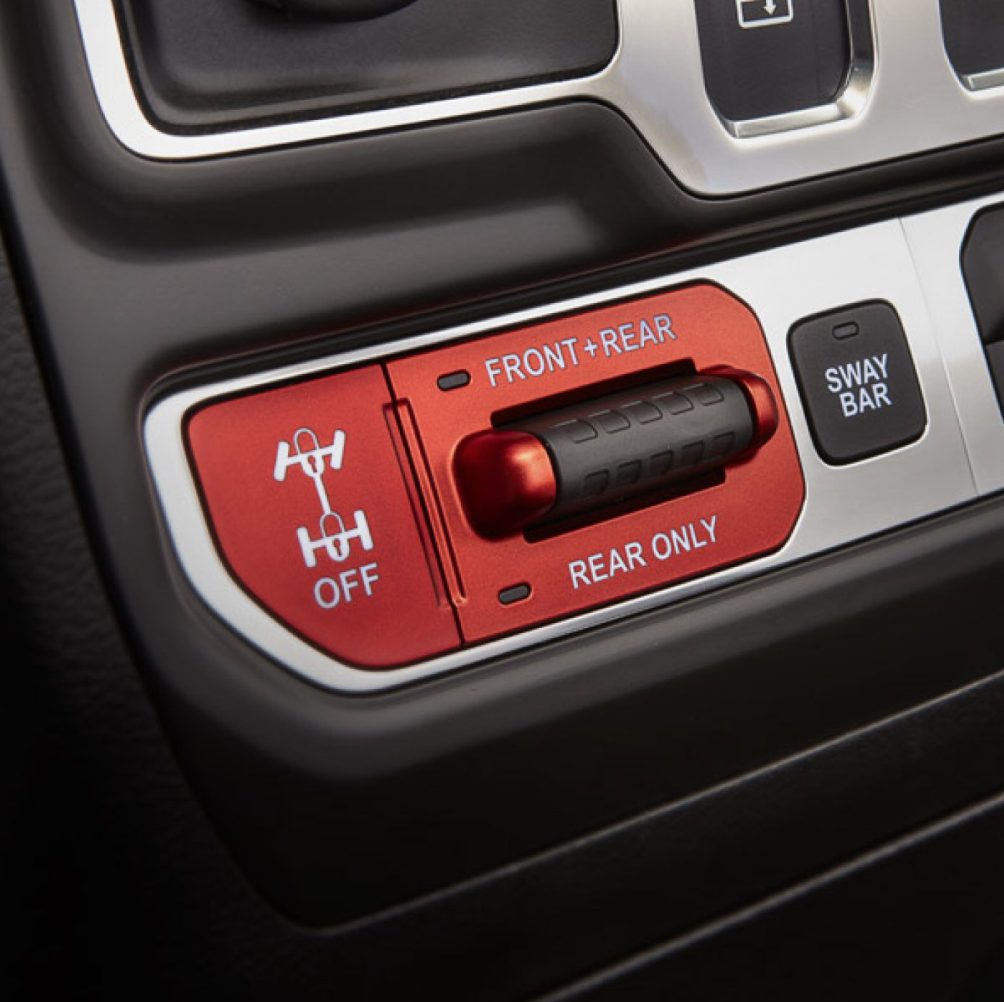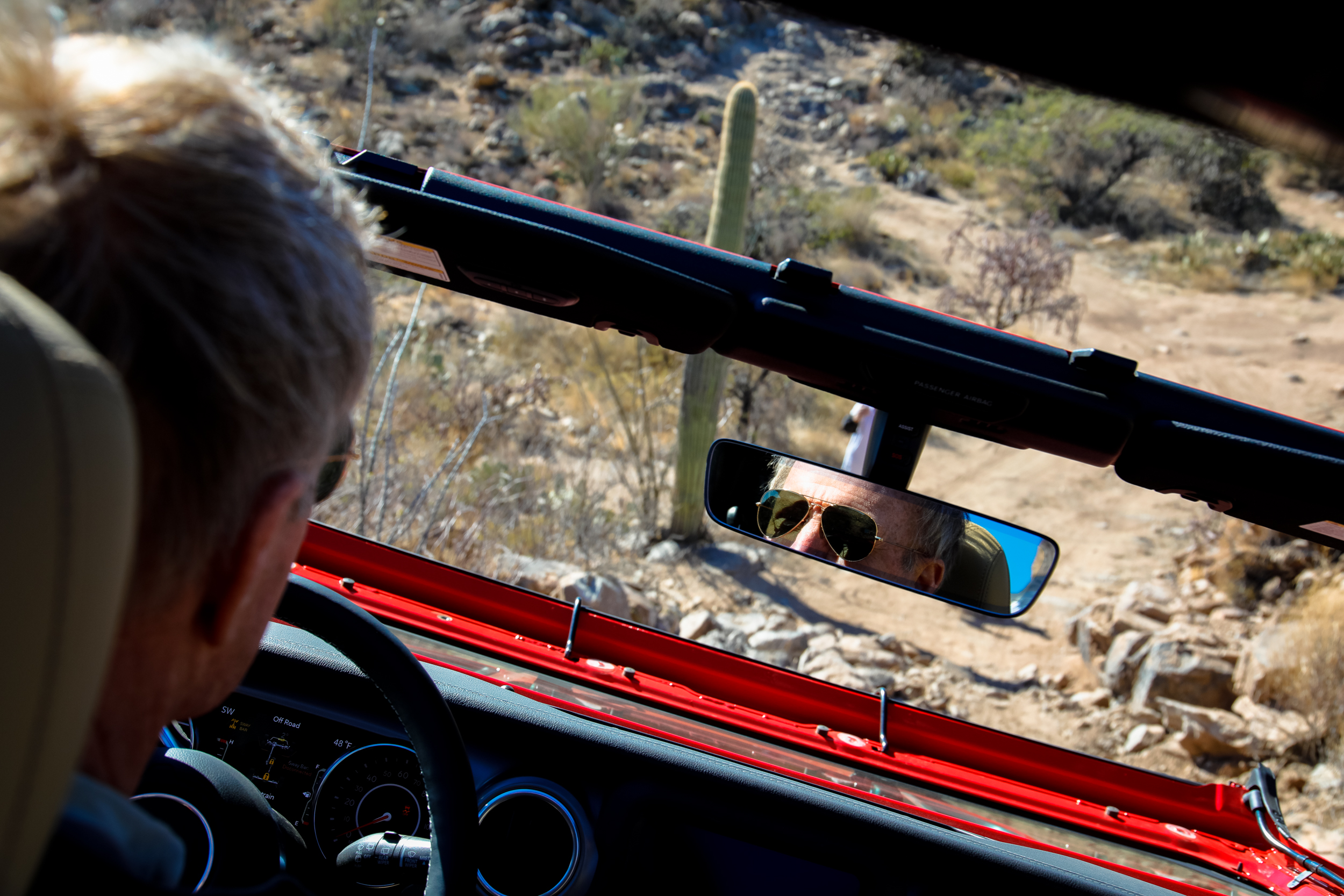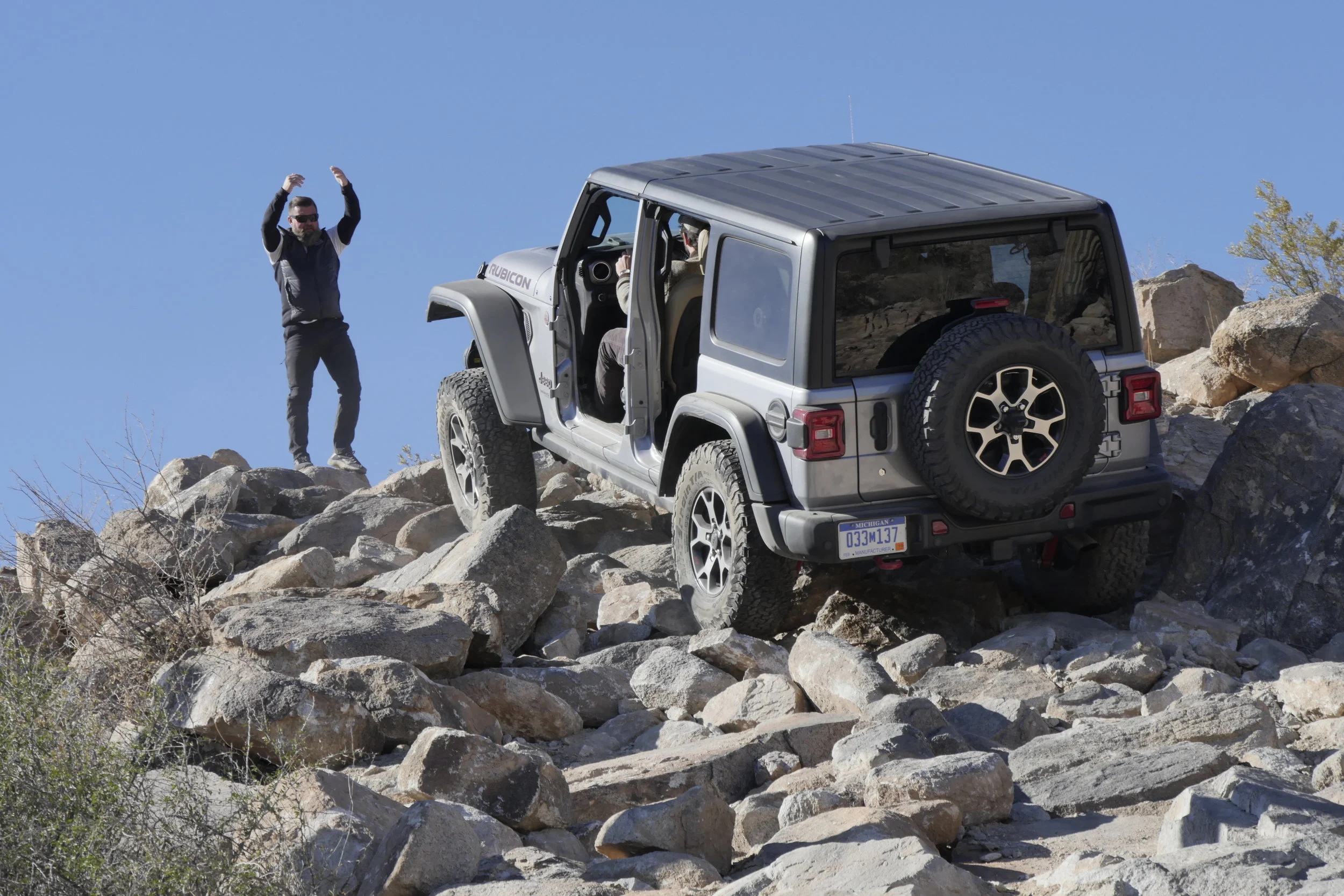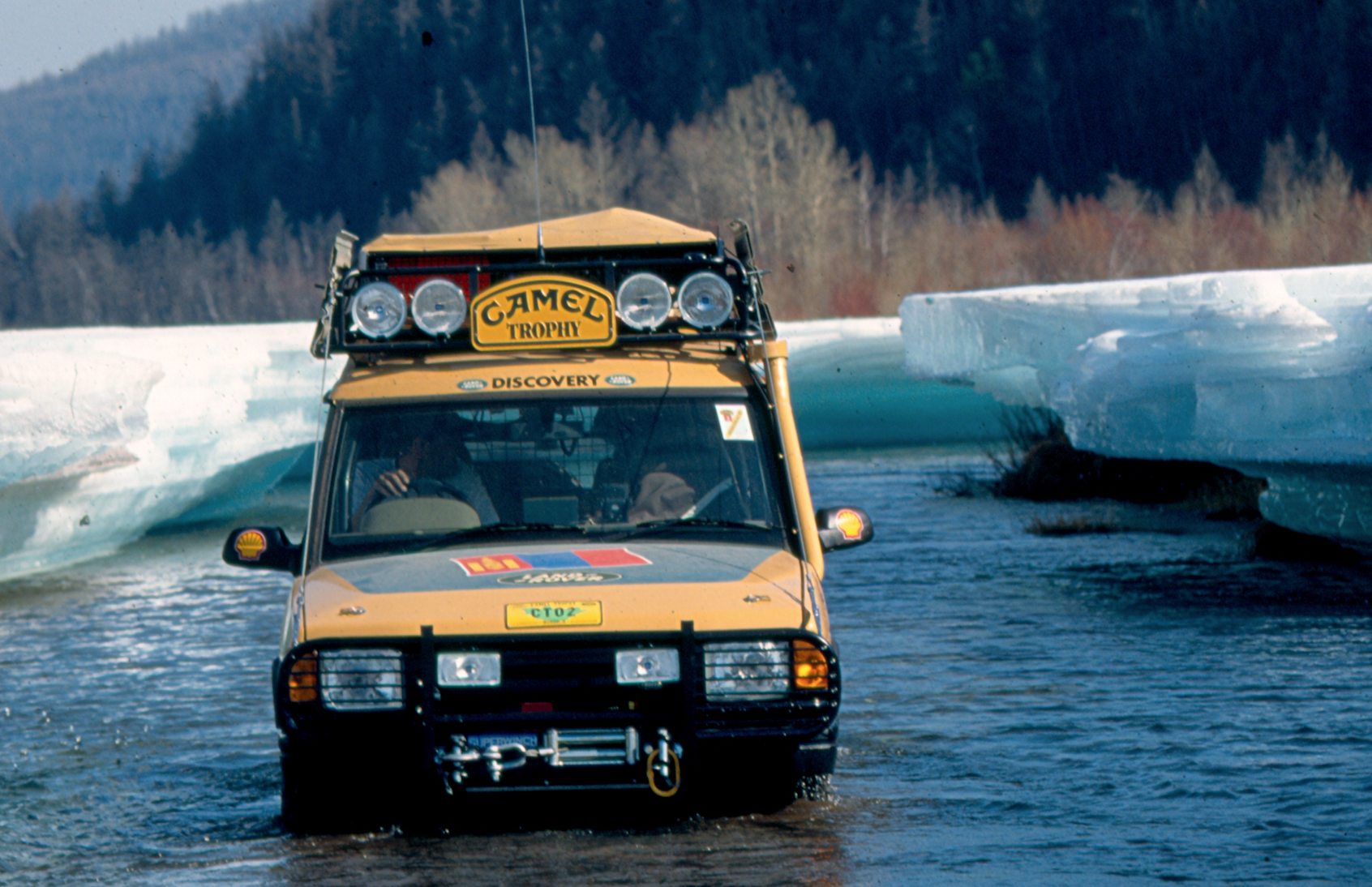
Overland Tech and Travel
Advice from the world's
most experienced overlanders
tests, reviews, opinion, and more
Hammers . . .
Lately I’ve been trying to expand my dedicated set of bicycle tools, largely the iconic blue-handled items from Park, which I described last time as the Snap-on on of bike tool makers. Honestly, besides the specialty bits—bottom bracket tools, brake compressors, head-tube reamers, and the like—there really is no particular “bikeness” about Park’s hex keys, wrenches, pliers, and screwdrivers. But they’re inarguably of high quality, fairly priced, and, well, the pegboard just looks sharp with color-coordinated tools, and it makes me feel like I’m a better bicycle mechanic than I really am, and perhaps if you feel like a better mechanic you’ll actually be one.
Or whatever rationalization you like . . .
In any case, recently I decided it would be nice to have a dedicated hammer for bicycle work, for when certain things just need a tap or two either to get where they’re supposed to be or to be removed (the cottered cranks on Roseann’s vintage Raleigh come to mind). So I ordered a Park hammer with one hard face and one (replaceable) plastic face.
I was expecting a 3/4-scale tool suitable for not endangering expensive Campagnolo parts or brittle carbon fiber; instead I got a full-sized brute of a thing that weighs 2.1 pounds.
Hmm . . . that got me thinking, and I pulled out the One Case Tool Kit (full-size version). In it I currently have two hammers—a sledge for rough work and a Craftsman plastic-faced product with one soft and one harder face. The sledge weighs 2.4 pounds, the plastic hammer just under a pound. Honestly, the plastic hammer has proved too light. Even as something designed to be gentle on parts it lacks sufficient mass and kinetic energy to be effective. Comparing the new Park hammer, it is not that much lighter than the sledge for rough beating, yet usefully twice the weight of the Craftsman plastic hammer. And by replacing both previous hammers I actually save almost a pound and a half.
So, er, now I need to buy another bicycle hammer . . .
The most perfect tool on earth
Okay, that might be a bit of an overstatement. But every now and then you come across a tool that does exactly one thing, but does it so perfectly that you wonder how you got along without it.
In this case, the one thing to which I'm referring involves a fastener found, among many other places, on Land Cruiser carburetors. It's a near-microscopic springy bit known generally as a hair-pin clip, or colloquially as a Jesus clip (is it sacrilegious to use a capital there?)—either because some of them are shaped like the letter J, or because of the epithet used when one flies out of your grasp. On carburetors they're used to secure linkage rods by popping into a groove at the end of the rod. Removing and replacing them has always been a dicey proposition with needle-nose pliers or, slightly better, hemostats. Dicey because if one of these things pops out of whatever you're using to hold it, it's gone.
A few months ago, our master Toyota mechanic friend Bill Lee was visiting, and while he was here he addressed some issues on the FJ40's carb. When he started disassembling the linkage he pulled this out of his kit: a simple plunger-activated rod with a tiny hook in the end of a tiny tube.
The hook grabbed each Jesus clip and popped it off (and back on again) with effortless security. A groove in the end of the tube ensured the clip stayed straight, even when pushing it back into place.
OMG. I had to have one.
Except it turns out the company that made them, Lisle, discontinued part #46500. Little demand for fiendishly clever carburetor tools these days, I guess. I haunted eBay for weeks but failed to find a used one—until Bill visited again, and handed me one a mechanic friend, Jeff Bell, had given him. I'm going to be rebuilding my carburetor every six months just to employ this thing. Brilliant.
More on the OCTKL
Snap-on and JH Williams screwdrivers
The One-Case Tool Kit Lite (OCTKL) has been gathering dust the last few months. Trail dust, that is. It’s seen enough use that I thought a report was warranted, although I’m not sure the kit has assumed its final form. (See here and here for the initial articles.)
In many instances the contents simply migrated from the OCTKL’s 60-pound progenitor. But I wanted to try a few different things, and I explored a couple of new-to-me manufacturers. Here’s what I’ve been doing.
I go back and forth on screwdrivers. Sometimes I think Ace Hardware stuff is just fine. A 12-piece set there will run you $29. Snap-on charges $187 for seven pieces—four standard, three Phillips. That’s $26 each. Yes, they’re U.S.-made. Yes, the Snap-on items incorporate hex fittings so you can apply a wrench for extra torque, so they’re obviously durable. But seriously? I’m perfectly happy to drop $180 on a half-inch Snap-on ratchet, which might be the critical tool for a major repair. Less convinced I need the same commitment for screwdrivers.
Out of curiosity I started browsing Snap-on’s “Industrial Brands,” which comprise various subsidiaries that make tools for Snap-on in various countries of origin. One intriguing brand was JH Williams, which in at least some cases appears to manufacture tools equivalent to Snap-on tools of earlier generations. On Amazon I found a basic five-piece Williams screwdriver set, #100P-5MD—three slotted drivers and two Phillips—for $38.23. Also available was a comprehensive 19-piece assortment for $115. The Williams drivers appeared to be exact clones of the Snap-on screwdrivers I, er, actually bought about 15 years ago—right down to the hex fitting. The handles are identical—a rather slick black composite, which at first seems contra-indicated. However, they are shaped well for grip, and the finish makes them easy to clean up in the field—an important benefit in my book. I bought the basic kit as an experiment, and so far they’re performing perfectly.
I was surprised to see the Snap-on Industrial Brands website lists the origin of the Williams screwdrivers as the U.S. I figured they had been made offshore. As best I can determine, these are indeed identical to the previous generation Snap-on screwdrivers. Hmm . . . Seems like a bargain to me.
So . . . what about other Snap-on Industrial Brands? One that’s been around forever is Blue Point, which I seem to recall originally was used to label Snap-on’s power tools. Now Blue Point covers a wide range of products, including hand tools. I decided to try a set of 3/8ths inch, 12-point deep metric sockets, which seem to be impeccably made, and grip fasteners with every indication of the tight tolerance that is a hallmark of high-quality sockets. The Blue Point sockets are made in Taiwan, which has become the source for high-quality tools from several other companies such as Facom.
I wanted to keep the OCTKL compact and as light as possible, but I didn't want to simply dump my sockets into one of the pockets of the Blue Ridge Overland bag. So I ordered a set of flexible urethane socket rails from Off Road Trail Tools. They come in 1/4, 3/8, and 1/2-inch sizes, weigh next to nothing, and can be cut to length if you don’t need all 14 posts.
The ORTT urethane socket rails are flexible and trimable
On to . . . needle-nosed pliers? Yes. I find myself using these frequently, yet I’d never found a reasonably priced pair that I really liked—until I tried the ones pictured, from Park Tools, who are more or less considered the Snap-on of bicycle tool makers. Their NP-6 pliers have five different gripping, cutting, and crimping sections, fat and extremely comfortable and secure grips, and a gentle spring that keeps them open unless squeezed, meaning you only have to manipulate them in one direction. Well worth $25.
Simichrome
Just a quick note for those of you who, like me, prefer to keep your equipment looking good as well as performing properly. The other day I needed to polish the lovely English-made brass bell on the Thorn Nomad, and remembered to dig out the Simichrome polish. This stuff has been around for ages, but there's still nothing to beat it for shining up virtually anything that should be shiny, from bicycle accessories to chrome bumpers. Just look at the mirror finish on the bell:
The JL Wrangler Part 2: Rubicon
Scuffing tires on the demo course. Matt Scott photo.
I wonder if any of the corporate liability attorneys who signed off on the Jeep Wrangler Rubicon’s front and rear diff locks, anti-roll-bar disconnect, 4:1 transfer case, and 77:1 crawl ratio were ever given a demonstration of the vehicle’s capabilities.
Probably not. “Oh, those modifications? They, um, just help traction. You know, to enhance safety,” the engineers told them, winking broadly at each other.
And in a very real sense the engineers were telling the truth—it’s just that they were referring to traction on, say, a 30-degree hillclimb studded with boulders the size of engine blocks. Which is where I found myself, with FCA’s Scott Brown in the passenger seat, in an arrest-me-if-you-can-follow-me-red two-door Rubicon, top removed and windshield folded down. The eight-speed auto box was manually selected to first in low range, anti-roll bar disconnected, and both diffs locked. I noted with approval that (along with the anti-roll bar switch) the JL’s diff-lock selector has been moved to the center of the dash for easy access (in a bright red escutcheon to boot), and hugely simplified from the JK’s: Push down for rear lock, up for front and rear. Amazingly, the new electrohydraulic power steering gave me zero indication that the front wheels were rigidly joined; normally a locked front diff firms up even power steering noticeably.
Much-simplified diff-lock control. "Sway bar" button disconects front anti-roll-bar.
Through the windshield there was a lot of blue Arizona sky, and spotter Jim Horne’s arms motioning me straight up, and up, and then left across the boulders. Scott and I transitioned from being pressed into our seats to being pressed, respectively, against the center console and driver’s door. The side/down slope was enough to make Scott give a little whoop of excitement, and for me to appreciate the integrated roll cage surrounding us. The Jeep, of course, was loafing, idling in that 77:1 crawl ratio at half walking speed, each BFG All-Terrain tenaciously gripping granite (the techs hadn’t even bothered to air them down). A turn right back towards the sky, a pause while Jim wedged an extra rock under the left rear tire, then we were over, and being waved on to the next obstacle by the next spotter. (That particular hill would shortly be closed down for rebuilding after another journalist repeatedly applying too much throttle while ignoring instructions managed to send a bunch of those engine blocks tumbling down the slope.)
Jim Horne guides a Rubicon Unlimited up the hill.
The JL Sahara Matt Scott and I had driven to get to the staging area had impressed me with its capability, and driver-independent traction-control systems are getting better with each generation. But the Rubicon is in a different universe. Even the best ABS-based traction control can’t match the ability to manually lock one or both axle differentials in advance of a limited-traction situation. Flip that center toggle switch upward in the Rubicon and you have Four. Wheel. Drive. Period. Combine that with the disconnectable front anti-roll bar, which hugely increases compliance—and comfort—on a rough trail, and a crawl ratio slow enough to let you watch cactus grow on your way past, plus excellent approach and departure angles (44º and 37º), standard BFG All-Terrains, etc. etc., and you have a vehicle unmatched by anything in its class in terms of backcountry capability—either in the U.S. or the rest of the world.
That much capability necessitates a strong foundation to withstand the stresses involved in powering a 4,300-pound vehicle up a torturous slope. While the JK Rubicon was more than up to the task, the JL raises the bar. The fully boxed chassis now employs 80 percent high-strength steel, with five boxed crossmembers. Torsional rigidity is up by 18 percent, yet, the factory claims, weight is down by 100 pounds. The next-generation Dana 44 axles have been improved as well: The front axle tubes are 10 percent larger in diameter, 14 percent thicker, and twice as strong as the previous versions. End forgings on the Rubicon are 11 percent stronger. Components no driver could ever notice have been studied, critiqued, and tweaked.
FCA's Scott Brown rides along. Matt Scott photo.
FCA’s introduction and their excellent driving course left little doubt that the JL Rubicon is everything the JK Rubicon was, and more. (Some might see the move from BFG Mud-Terrains to All-Terrains as a retrograde step, but it’s not. In a majority of situations not involving mud, ATs are the equal of if not superior to MTs. And the new tires certainly help reduce road noise, and definitely bump fuel economy.) So the Rubicon’s bona fides for competency in extremely rugged terrain remain unmatched by anything in its class. If you’re looking for a vehicle that can serve as a perfectly comfortable daily driver, then be nearly invincible for weekend explorations of any trail you have the skill to drive, it remains the icon.
The question is: If I were considering a Wrangler as an overlanding vehicle—that is, for long-distance, self-sufficient travel on a mixture of paved and dirt roads, with four-wheel drive sections definitely in the mix but little emphasis on difficult passages unless they were unavoidable due to route or weather—and if my funds were not bottomless, which way would I go? I evaluated two approaches, both of them the Unlimited (four-door) body style:
- Go basic and order a Wrangler Sport with suitable options. On FCA’s new Wrangler build site I specced a Sport with the same Pentastar V6 and excellent ZF eight-speed automatic transmission as the Rubicon, the standard black hardtop, Anti-Spin rear diff, all-terrain tires, and a few other relevant bits such as heavy duty electrics (240-amp alternator, 700-amp battery), etc., for $36,305. It would have the simple Command-Trac part-time four-wheel-drive transfer case with ABS-based traction control (which Jeep refers to as a differential brake). To be honest, this system is capable of handling 99 percent of the terrain I have experienced on extended journeys in South America, Australia, and Africa, even completely off-tracks forays into Egypt’s sand seas. (The Anti-Spin diff is designed to seamlessly handle slight differences in cross-axle traction; the more intrusive ABS- based traction control kicks in for more extreme variations.) Jeep lists the cargo capacity if the Sport at a middling 1,000 pounds, not including the driver. (One of the few disappointments of the JL redesign is the lack of a heavier GVWR option. I wonder if the upcoming pickup version will raise this.)
- Finance a bigger chunk and go for the Rubicon. In addition to the drivetrain and suspension features—4:1 transfer case, electric locking differentials front and rear, driver disconnectable front anti-roll bar, 4:11 diff ratios—the Rubicon boasts other standard features not available on the Sport: premium seats, an AC power outlet, a seven-inch touch screen, power heated mirrors, remote keyless entry, plus several premium options. I went through its build list, not going crazy with leather upholstery or any similar spurious extras, but nevertheless equipping it more upscale than the Sport, and came to $48,090. (I could easily have added another $4,000-$5,000 in bling.) Cargo capacity of the Rubicon is even less than the Sport—890 pounds.
Despite the slightly higher GVWR of the Sport, I’m pretty sure that for either vehicle I’d want heavier-duty rear springs and shocks if I planned on traveling with a passenger and a full load of equipment, food, and water. Even a load nearing but not surpassing the factory limit would depress the stock rear springs enough to upset the ride height and headlamp alignment. So that modification would cost about the same for either vehicle. Otherwise, what does one get for the extra $12,000 of the Rubicon besides—let’s not diminish this—the knowledge that anywhere in the world you traveled you would be able to tackle the toughest routes passable by any stock vehicle?
One answer worth considering lies in those next-generation Dana 44 axles, a significant step up in strength and durability from those fitted to the Sport. Note: I absolutely do not think the Sport is under-equipped in that category (as long as you don’t try to cram stupidly oversized tires on it), but the overwhelming priority for an overland vehicle is reliability and durability, and there is no doubt that the Dana 44s would optimize that in a Wrangler.
On the other hand, the higher (i.e. numerically lower) final drive ratio of the Sport—3.45 vs. 4.10—might make for slightly more relaxed freeway cruising at the expense of low-range crawling. However, with the eight-speed auto transmission on each, and taller tires of the Rubicon, I’m not sure how noticeable this will be, and I did not have a chance to directly compare the two, as I only had access to the Rubicon in the dirt.
Of course the extra comfort (I wouldn’t classify them as “luxury”) items standard or available on the Rubicon would make traveling a bit more relaxing.
In the end—and I hope this doesn’t sound like a copout—I would buy the Rubicon if I had the funds, and be completely happy with the Sport if I did not. In fact, I’d leave for a trans-Africa trip in either with no hesitation.
Remembering to pack carefully, of course.
Thanks for the photos, Matt!
Testing the (all new?) Jeep Wrangler JL
As the owner of an FJ40 Land Cruiser in the 1980s, my attitude toward its Jeep corollaries—then the shorter-than-FJ40 CJ-5 and longer-than-FJ40 CJ-7—was one of arch superiority.
And with good reason. Those Jeep models were competent backcountry vehicles, but prone to numerous problems. The CJ’s undersized two-piece axle shafts were notorious for breaking, if the axle tubes themselves didn’t bend first. Frames cracked around the steering box, crossmembers, and suspension mounts frequently enough to spawn a host of aftermarket reinforcement bits. The suspension itself looked toylike alongside the mighty leaf springs on the Land Cruiser. Other issues—pitman arms, steering shaft couplers, power-steering box mounts—were well-known among owners, even if they didn’t admit them during trailside debates with drivers of foreign competitors.
In 1986 the YJ was introduced, with a better frame and beefier suspension. But the new track bars, added to increase on-road stability, could tear off at their mounts under hard trail use, and many owners simply ditched them. The Central Axle Disconnect (CAD) system proved troublesome as well. And then there were those ghastly rectangular headlamps, which made the YJ look right at home parked next to a 1976 Chevy Monte Carlo . . .
This just ain't right (Chrysler image)
Thankfully, with the 1997 TJ Chrysler returned to the round headlamps God intended for Wranglers—and, in a move that made this Toyota driver take notice, installed supple all-coil suspension (although this came more than a decade after Land Rover had done the same on the Defender). When the Rubicon Edition appeared in 2002, with Dana 44 axles, front and rear diff locks, and a 4:1 transfer case, owners of FJ40s (and Tacomas, and Pathfinders, and . . .) suddenly found pressing household chores that needed doing when asked out on trail runs by friends eager to show off their new ride.
Then came the JK and, critically, its 116-inch-wheelbase, four-door Unlimited version. In 2009-2010 I spent a year with a review Wrangler Rubicon Unlimited, during which I covered slightly over 35,000 completely trouble-free miles. I was less than impressed with the 3.8-liter V6, which offered neither a surfeit of power nor impressive fuel economy. The vehicle’s cargo capacity and GVWR were also underwhelming. Other than those gripes, I found the Wrangler to be . . . extraordinary. Here, at last, I thought and wrote, was an American vehicle fit to pit itself against the best expedition machines on the planet—the Land Rover Defender, the Land Cruiser 70-series Troop Carrier, the Mercedes G-Wagen. A couple of years ago I tested another Rubicon Unlimited, this time with the vastly improved 3.6-liter Pentastar engine and five-speed automatic transmission. In low range, with the front anti-roll bar (not “sway bar,” as the button incorrectly claims) disconnected, and both diffs locked, it would traverse terrain I would never have dreamed of tackling in the FJ40—or even in a late and lamented 80-series Land Cruiser with its own diff locks but inferior crawl ratio and no anti-roll bar disconnect. Around the same time, Tom Sheppard and I included the Jeep Wrangler Rubicon Unlimited in the fourth edition of the Vehicle-dependent Expedition Guide, in a four-vehicle comparison chart of what we considered the best choices for long-distance backcountry travel.
When FCA confirmed that it was working on a redesign of the JK Wrangler, those trolls who love to make others as unhappy as they are began flooding the forums with the worst sorts of fake news. It was “confirmed” that the new Wrangler would have independent front suspension, abandoning the sturdy solid axle. Then it was confidently announced that the new vehicle would have all-independent suspension, and furthermore that the separate, fully-boxed chassis would be swapped for unibody construction. It was by then actually known for a fact that the new Land Rover Defender, due out in 2018 or 2019, would follow the unibody/IFS/IRS template, so it took little for Wrangler fans to begin pre-emptively drinking heavily in dread anticipation.
Perhaps in an altruistic attempt to stem a rising tide of alcoholism among loyal customers, FCA initiated a studiously rationed trickle of leaked specifications, and photos of test mules “disguised” with little more than a few cardboard panels. Slowly, as these circulated, sighs of relief could be noted in those fan threads. Clearly the new Wrangler would still ride on solid axles. The body still sat on a separate chassis. The sun would still rise in the east.
Okay. But what about changes? Improvements? This was, after all, the first redesign of an iconic model in ten years, yet at a glance the vehicle looked virtually indistinguishable from its parent. The windshield appeared to be a little more raked, indicating improved aerodynamics and suggesting to the cognoscenti that the traditional fold-down capability (originally designed into the WWII Willys MB simply so it could be crated) was probably deleted. No big deal as the procedure in the JK was such a monumental pain no one did it anyway, even for fun-in-the-sun beach drives. The seven-slot grille was still in place—not even the leisure-suited and blow-dried designers responsible for the YJ’s headlamps had messed with that—but it, too, seemed to have gained some slope. Other than that it was difficult to detect many differences.
Thus, both diehard fans and newer converts such as myself were at the same time relieved that FCA had not messed with the basic recipe of the Wrangler, and curious as to how they would justify the label of “new” rather than simply “updated.”
Sitting in the press introduction at Tucson’s swank Dove Mountain Ritz Carlton, and listening while Mark Allen, Ryan Patrick Joyce, Dave Bustamonte, and Brian Lee discussed their respective roles in the design of the new Wrangler, I began to understand. Whether describing something as routine as the layout of the dash, or as critical as the construction of the chassis, there was a remarkable sense of assurance in the team, a confidence that the basic design and look of the Wrangler was in no need of spurious marketing-driven change for the sake of change. Not once did I hear anyone use the phrase, “Dynamic styling touches,” or, “Bold new lines.” Instead I was informed that:
- The chassis—still fully boxed of course (listening, Toyota?)—now comprises 80 percent high-strength steel. It is 18 percent more torsionally rigid than the previous chassis, yet lighter.
- The hood, doors, hinges, and windshield frame are now made from aluminum. The rear swing gate frame is magnesium. Overall weight savings is claimed to be 200 pounds on the Unlimited.
- The already stout Dana 44 axles have been further strengthened. Crawl ratio on the Rubicon is now 77:1 with the auto transmission, and an astounding 84:1 with the manual.
- Despite (or because of) a 2.4-inch longer wheelbase, the Rubicon Unlimited has improved approach and departure angles. Even the ramp breakover is said to be improved. Fording depth is an excellent 30 inches.
- Despite the longer wheelbase, the turning circle has been shortened by a foot. Electro-hydraulic steering is now standard.
- An optional front bumper is winch-compatible and has removeable side sections to enhance clearance.
- Not only does the windshield still fold, it now does so by removing only four bolts, and actually folds flatter than the JK’s to enhance visibility. Additionally, the optional Sky One-Touch powertop opens the entire roof at the touch of a button.
There was more—much more. But see what I mean? A huge majority of the changes to the Wrangler—which in the amalgam certainly warrant the term “all-new”—are invisible on a cursory inspection. Even the actual external styling updates—which lower the Wrangler’s drag coefficient by nine percent—could easily be missed when a new Wrangler drives past you in the opposite direction.
After the introduction, FCA first sent us on a 15-20-mile road trip in a mixture of Sport and Sahara models, some with the carried-over 285-hp/260-lb-ft 3.6-liter Pentastar V6 (now with stop/start technology), some with the new and intriguing 2.0-liter, 270-hp/290-lb-ft turbocharged four-cylinder “mild” hybrid. The latter has what looks like a massive alternator mounted low on the passenger side of the engine, connected to the crank via a serious-looking belt. It powers a 48-volt system that returns power to the crank at low speeds (thus essentially eliminating turbo lag), and incorporates regenerative braking. This engine will actually be an extra-cost option, and whether that flies with American buyers, who traditionally view the larger engine as the premium choice, will probably depend almost entirely on its fuel economy numbers, which have not yet been released. In terms of power the consensus among the journalists who tried it was that it felt a bit stronger at low RPM than the V6—an impressive performance. Personally I have long argued that a four-wheel-drive vehicle’s engine should produce more torque than horsepower, so three cheers there. Transmissions include a six-speed manual and an eight-speed auto.
(It was also confirmed that a turbodiesel engine is on the way, but not until late in 2018. Damn. But Oh boy.)
I teamed with Matt Scott (U.S. distributor of MaxTrax in his off-journalist hours) for the on-road drive, on a mix of freeway, two-lane, and dirt roads. I felt immediately familiar and comfortable in the driver’s seat; Matt, however, who is six-something and long-torsoed, had to adjust the passenger seat carefully to avoid interference between the roll cage and the back of his head. But I have no sympathy for tall people. I liked the simple horizontal orientation of the major instruments and vents on the dash, and the manual as opposed to touch-screen adjustments for the climate control. Our Sahara model had the smaller display screen (they vary depending on model and options from five up to 8.4 inches), but it was still legible. I was pleased to note some rudimentary insulative fabric panels in the fiberglass roof. The ’09 had none, and would fry one’s hair driven in 110º southern Arizona weather. I was disappointed to find the window controls remain in the center binnacle rather than on the doors—in a year I never got used to that.
All the interior materials seemed absolutely first-rate and suitable for the Wrangler's intended use. The stitching is real, not stamped, and all the controls operate deliberately, indicating you could still use them confidently on a rough road. The seats are supportive, the steering wheel is comfortable, and the major instruments visible, including the screen between the speedometer and tach, which scrolls through a wide range of functions, including tire pressure and a "tilt-o-meter," as my wife refers to them derisively.
One of the Wrangler's glaring disadvantages in comparison with other iconic expedition vehicles has been cargo volume and GVWR. Looking at the rear of the new one, the space appeared no larger but seemed more square, which is an improvement. Thankfully the goofy floor-mounted speaker is gone, although its vertically oriented replacement is larger in diameter and still intrudes on precious cargo space. A welcome addition is the brace of tie-down tracks to secure gear; however, they are inset so far toward the center of the space—and that minimal space will be so packed with stuff—that usability when loaded for a long trip will be questionable. For a traveling couple who can lower the back seat (which folds flat), the cargo situation improves significantly as volume goes from 31 to 70 cubic feet, but for a family of four it's going to be tight.
Also problematic is the load capacity. The Sahara lists 1,187 pounds including passengers, etc., but the Rubicon Unlimited (the natural choice for an extended journey in dubious terrain) allows just 900. While your friends with Land Cruiser Troopies, Land Rover Defenders, and Mercedes G-Wagens are tossing in fridges, chuck boxes, and oversized sleeping bags with running deer on the lining, you'll be packing very carefully indeed. (Given the identical chassis, brakes, etc. between the Sahara and Rubicon, I suspect the lower figure for the Rubicon has to do with the spring/shock rates and concern about the effects when the anti-roll bar is disconnected, so as an owner I wouldn't hesitate to upgrade the rear springs and shocks and use the higher limit. But you're still well below the ton or so allowed in the others.)
So—on the road? I’m always amused by the journalists who wave the flag to have the Wrangler cleave to body-on-frame construction and solid axles, then purse their lips and remark on the “harsh” or “unforgiving” ride quality. Really? Do they complain because a Carrera 4S doesn’t deliver the fuel economy of a Prius? Or because a Prius lacks the cargo capacity of a Suburban? “Horses for courses,” as the saying goes. If you want a body-on-frame 4WD vehicle with solid axles built to withstand extended use in the backcountry, it’s going to ride like a body-on-frame vehicle with solid axles. Even the original Range Rover, imbued by the wizards in Solihull with perhaps the best ride ever coaxed from the arrangement, only rode superbly within that context. When Land Rover decided to tilt the platform toward on-road comfort, they went unibody and all-independent suspension.
In fact the Sahara rides very well. The body structure feels vaultlike no matter what the surface, and the all-coil suspension does a fine job of harnessing the considerable unsprung weight of the solid axles. The single significant fault I found with the ride of my long-term ’09 was severe sideways head toss from bumps or washboard (corrugations) on only one side of the vehicle. We didn’t find a similar surface to try on this drive so I’m not sure if that’s been addressed. But having put in a couple of 800-mile days in Wranglers, I have zero complaints about on-road comfort.
After a short 80mph freeway blast, we swapped drivers. (Those same journalists who whinge about the ride also praise the Wrangler’s staunch foursquare looks, then complain about wind noise. Seriously? Come ride in my FJ40 if you want to hear wind noise.) Matt took us through Saguaro National Park West and onto a dirt road marked on our route. We were curious about the Selec-Trac full-time four-wheel-drive transfer case. In its automatic mode, it is biased toward rear-wheel drive, but can direct more power to the front wheels as needed when slip is detected. Matt decided to give it a quick test, and came to a stop, then buried the gas pedal. The Jeep surged ahead with no sign we could detect of momentary rear-drive fishtailing or a noticeable shift of traction to the front. Interesting. (When shifted to low range, the Selec-Trac transfer case locks so you always have power evenly divided between front and rear wheels.)
A short section of washboard failed to upset the Sahara’s aplomb, and the street-oriented tires (and Selec-Trac) had no problem when we were directed off the dirt road and onto a twisted and steep trail leading into the heart of the Tortolita Mountains. In a clearing among the saguaros we found a raised lunch platform, an expansive buffet—and a line of Wrangler Rubicons.
To be continued . . .
Trust your spotter (if you trust your spotter)
Jim Horne guides a 2018 Wrangler Rubicon Unlimited up the demo course climb.
At the recent press launch of the new Jeep Wrangler JL, the organizers laid out an excellent driving course for the Rubicons to show off their capability, which is likely unmatched by any production four-wheel-drive vehicle on the planet. The course, in the rocks and hills of the Tortolita Mountains outside Tucson, included several challenging sections, and in particular one climb up a boulder-strewn hill that had several experienced journalists in the driver’s seats saying incredulously, “I’m going up that?”
At each section, spotters (or “marshallers” if you’re from outside the U.S.) were positioned to guide each vehicle through the dicey bits. It seems reasonable to assume that FCA would have made sure these guys knew what they were doing, right? And they did—those who watched them and followed their hand signals and guidance invariably made it through each section handily. But several drivers were apparently so freaked out by the boulder hill (or else so arrogant they assumed they didn’t need marshalling) that they took their eyes off the spotter and ignored hand signals to turn and shouted commands to slow down, fooling themselves into thinking that large applications of throttle were the only way they could get up that hill. As a result, a few wound up perched in precarious positions, having spat out rocks they could have crawled over, which required the spotters to crawl under the vehicles to reposition them. Finally a single driver managed to eject enough calf-sized boulders that the hill had to be shut down for the day to be rebuilt.
It’s axiomatic that a person standing in front of your vehicle has a much better view of where the front wheels are going than you do, no matter how experienced you are. (It’s also axiomatic that if he has already guided a couple dozen vehicles across the obstacle, he pretty much knows how to help you nail it the first time.) In situations where you must place your tires precisely to negotiate obstacles, a spotter is invaluable, as is a clear prior understanding of the visual commands to be given. Then, once you are committed to the line, you keep your eyes on the spotter, not over or around your hood where you won’t see anything of use anyway.
However, the corollary is, your spotter must know what he or she is doing, or the guidance could be worse than none at all. If you’re on a trail and come across a group negotiating an obstacle, and their spotter motions you forward, you’d be wise not to place your safety and the integrity of your vehicle in his hands until you’ve watched him guide others through and are satisfied of his skill. Also critical to spotting is that only one person should be doing it. If that same group has three or four people shouting and gesticulating at each driver, stay away.
If you are the marshaler, you have a responsibility to the driver to issue unmistakable instructions, and when possible they should be visual rather than vocal, as voices can be masked by engine and trail noise. Large movements with an arm and hand to indicate direction are better than small ones with a finger. Avoid confusing signals such as motioning “left” with your right arm arcing over your head or across your body. A closed fist or fists held up universally indicate “stop.” You can wave a driver forward and motion direction at the same time if necessary.
If close-up vocal commands for turning are necessary through the driver’s window, many experienced marshallers use “driver” and “passenger” to indicate, respectively, left or right. This is fine as long as you are in the U.S. with a left-hand-drive vehicle. However, I spend a lot of time in right-hand-drive countries (and own a right-hand-drive Land Rover here), so I prefer to use simple “right” and left” to indicate direction. The trick here is that if you are facing the driver it is your responsibility to make sure you indicate his or her right or left, not your own.
It’s also the responsibility of the spotter to make sure he can be seen by the driver. If you are spotting and can’t see the windshield of the vehicle you’re guiding, the driver cannot see you.
Roof racks . . .
I can tell you the exact moment I decided that roof racks on four-wheel-drive vehicles should be, 1) left off if possible, and, 2) loaded as lightly as feasible if not.
I had to ferry a cased, rigid-floor 14-foot Zodiac inflatable and a Yamaha outboard motor to a research station in Mexico from Tucson, using my 1973 FJ40. Neither boat nor motor would fit inside, so I decided to strap them on the roof rack—where, I noted with satisfaction, they looked purposeful and very, very stylish. Thus with almost exactly 500 pounds of equipment—in addition to the 100 pounds of my reinforced Con-Ferr rack—secured seven feet above my 90-inch wheelbase, I headed south. And all went perfectly well—until, on the apex of a blind right-hand curve, I discovered a very slow-moving cow in my lane.
Having successfully circumvented that cow—and with the Land Cruiser back on all four wheels—I decided, Okay, this is dumb.
It’s natural when you’re just starting out to want your vehicle to look like a proper expedition machine, and to a lot of us that means a roof rack, probably further enhanced with a bank of driving lights, a few NATO jerry cans, those awesome perforated sand tracks, a Hi-Lift jack, a Pelican case or three, and perhaps a roof tent. After all, for our inspiration we have those inspiring images of the Camel Trophy Land Rovers, high-mounted Bosch driving lamps blazing, forging paths through the jungles of Papua New Guinea or the black cotton soil of Tanzania. Those Range Rovers and Defenders and Discoveries remain unsurpassed as the epitome of expedition cool.
Two things are important to remember, however. One, the CT vehicles were navigating remote areas of the planet and overgrown tracks in stunningly bad conditions, and required huge amounts of recovery and survival equipment. Inside the vehicle were always two team members plus at least one journalist, so much kit simply had to go on the roof. And, two, those Land Rovers ended up on their sides very, very frequently in the midst of Special Tasks requiring greater than prudent speeds.
Any weight above the center of gravity of your vehicle tries its best to tip it over in the midst of an emergency maneuver, or at low speed when tilted on a side slope. And good old Newtonian-esque laws of mass, leverage, and velocity are always conspiring to do their worst. Two hundred pounds of driver sitting a few inches above the CG exerts much less force than 200 pounds of gear sitting a foot above the driver’s head. Excess weight on the roof affects braking as well. When the brakes are applied sharply, the weight on the roof tries to tip the vehicle over forward, unloading the rear tires. Modern ABS systems will prevent rear brake lockup, but braking distance will still be compromised.
So far we’ve only discussed handling and safety. But a roof rack and its load hugely affects windage as well. My FJ40 gets exactly one mile per gallon more without a roof rack than with it mounted. That might not sound like a lot, but the difference between 16mpg and 17 adds up—and this on a vehicle with the drag coefficient of a Motel 6. Imagine the effect on a modern, aerodynamic SUV.
All well and good. But what if you simply cannot fit all your gear inside the vehicle, because you, a) have a spouse and two kids, or, b) a very small vehicle, or, c) just too damn much stuff? An obvious solution presents itself for (c), but let’s discuss the other situations. If you decide you really need or want a roof rack, it’s smart to go with the lightest one possible that retains the rigidity you need. It also makes sense to go for the lowest profile possible, so that when it’s not loaded with gear it creates the least amount of windage. Front Runner, among other companies, produces low-profile aluminum models that are lightweight but exceptionally sturdy. Then decide if you really need a full-length rack, or if a half-sized rack would suffice, mounted well behind the air flow coming up the windshield.
As to what to put up there, choose the light but awkward items that take up the most room inside—camp chairs, tables, bedding, for example. How much is too much? It depends on numerous factors, of course, high among them the weight of the vehicle itself. Two hundred pounds on the roof of a Suburban will affect it less than 200 pounds on a RAV4. If you need a rough guide, try to keep the weight of rack and gear to significantly less than five percent of the curb weight of a vehicle with no suspension lift. On a 4,500-pound Jeep Wrangler Unlimited, for example, that would give you enough leeway to mount a Front Runner rack and a two-person roof tent without dangerously affecting the handling—although I guarantee you will feel the difference.
Then, please skip the Pelican cases and jerry cans, okay?
All images courtesy Peter Sweetser, Camel Trophy Owner's Club
Hint: When using “Search,” if nothing comes up, reload the page, this usually works. Also, our “Comment” button is on strike thanks to Squarespace, which is proving to be difficult to use! Please email me with comments!
Overland Tech & Travel brings you in-depth overland equipment tests, reviews, news, travel tips, & stories from the best overlanding experts on the planet. Follow or subscribe (below) to keep up to date.
Have a question for Jonathan? Send him an email [click here].
SUBSCRIBE
CLICK HERE to subscribe to Jonathan’s email list; we send once or twice a month, usually Sunday morning for your weekend reading pleasure.
Overland Tech and Travel is curated by Jonathan Hanson, co-founder and former co-owner of the Overland Expo. Jonathan segued from a misspent youth almost directly into a misspent adulthood, cleverly sidestepping any chance of a normal career track or a secure retirement by becoming a freelance writer, working for Outside, National Geographic Adventure, and nearly two dozen other publications. He co-founded Overland Journal in 2007 and was its executive editor until 2011, when he left and sold his shares in the company. His travels encompass explorations on land and sea on six continents, by foot, bicycle, sea kayak, motorcycle, and four-wheel-drive vehicle. He has published a dozen books, several with his wife, Roseann Hanson, gaining several obscure non-cash awards along the way, and is the co-author of the fourth edition of Tom Sheppard's overlanding bible, the Vehicle-dependent Expedition Guide.

